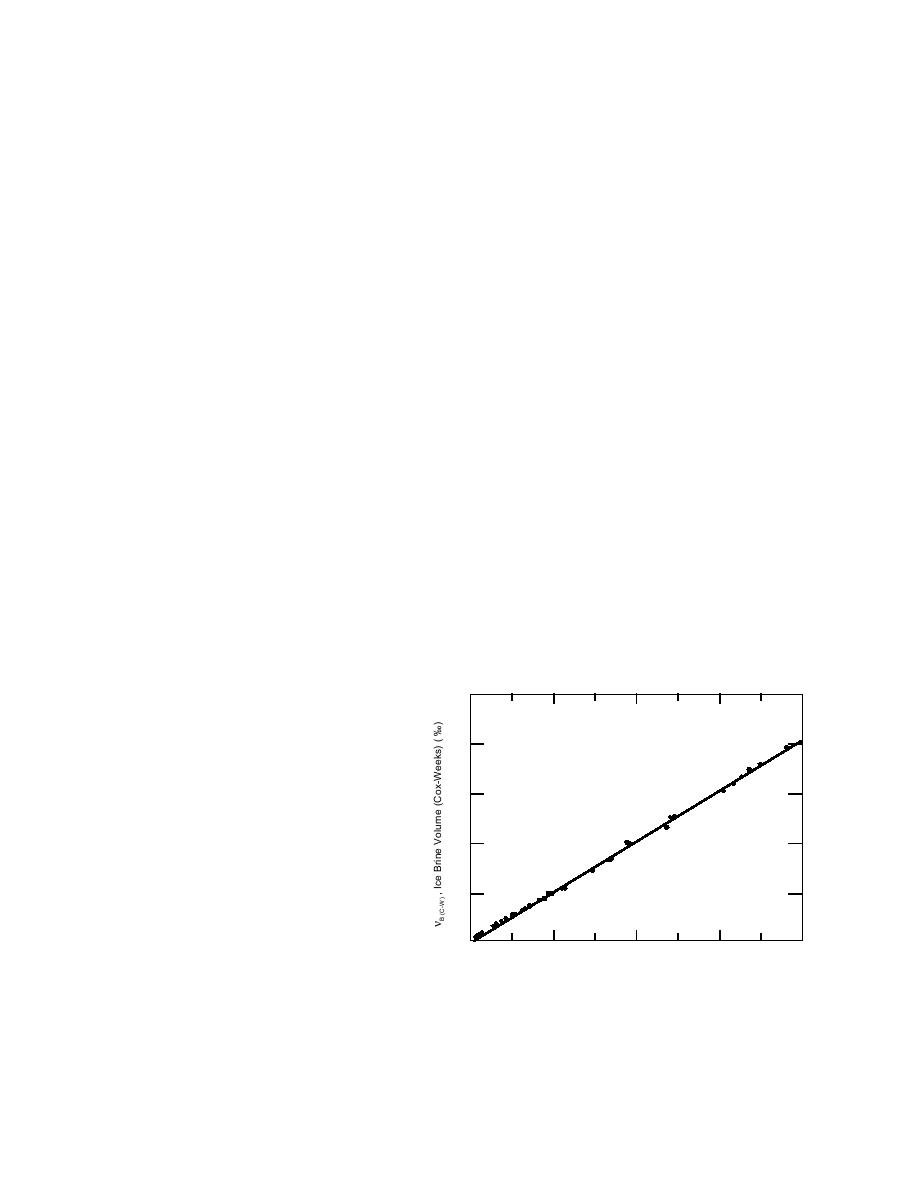
Sea Ice
Part II. Estimating the Full-Scale Tensile, Flexural, and
Compressive Strength of First-Year Ice
AUSTIN KOVACS
wide tongs is generally satisfactory, provided the
INTRODUCTION
core is ridge-free and of uniform diameter. Where
It is well known that the strength of sea ice is to
this is not the case, the diameter measured will
a large extent dependent on brine volume, and
not be accurate and the volume determination
that brine volume is a function of ice salinity and
will be off. This is illustrated in Figure 1, which
temperature. Brine volume may be estimated us-
gives a comparison between brine volume deter-
ing the empirical expressions of Frankenstein and
minations made on ~10-cm-long sections from
Garner (1967) or the theoretical densityvolume
several first-year Arctic sea-ice cores using the
fraction equations of Cox and Weeks (1983). The
equations of Cox and Weeks and Frankenstein
former is by far the simplest method, because the
and Garner. The regression curve through the data
only inputs required in the brine volume equa-
in Figure 1 did not include the outlier (+). The
tions are ice salinity and temperature. Since the
outlier indicates where a measurement error oc-
latter approach is based on phase relationships, it
curred, perhaps because of a volume measure-
allows for the calculation of the gas volume and
ment error.
thus the total ice porosity and the brine-free ice
It is recommended that when the Cox and
density. With this method, the bulk density of the
Weeks (1983) equations are used, and they must
sea ice is also needed and therefore must be deter-
be for determining gas volume, total porosity, and
mined. In principle this is a simple task,
but it can be difficult to do in the field.
250
Today, ice core weight is measured by elec-
νB (C-W) = 1.270 + 1.026 νB (F-G)
tronic scales rather than triple beam bal-
r 2 = 1.000
200
ances, which are subject to uneven support
S D = 1.15
surface and wind effect errors when used
at unsheltered sites. Electronic scale weight
150
measurements can be highly representative
of the in-situ ice if brine drainage has not
+
occurred during coring or after the ice core
100
was removed from the bore hole. Deter-
mining ice core volume is a bit more trouble-
some. Ice core length should be measured
50
along the center axis using a special caliper
or gauging device (Kovacs 1993). A meter
rule should not be used for this purpose (it
0
50
100
150
200
ν B (F-G) , Ice Brine Volume (Frankenstein-Garner) (‰)
often is), because the ends of the ice sample
Figure 1. Comparison between the Cox and Weeks and the
may not be parallel to each other. The more
Frankenstein and Garner methods for calculating sea-ice brine
difficult measurement is ice core diameter.
volume. The data point represented by + is considered an
Again, a ruler should not be used. A pie
outlier.
tape (Kovacs 1993) or a caliper with long,



 Previous Page
Previous Page
